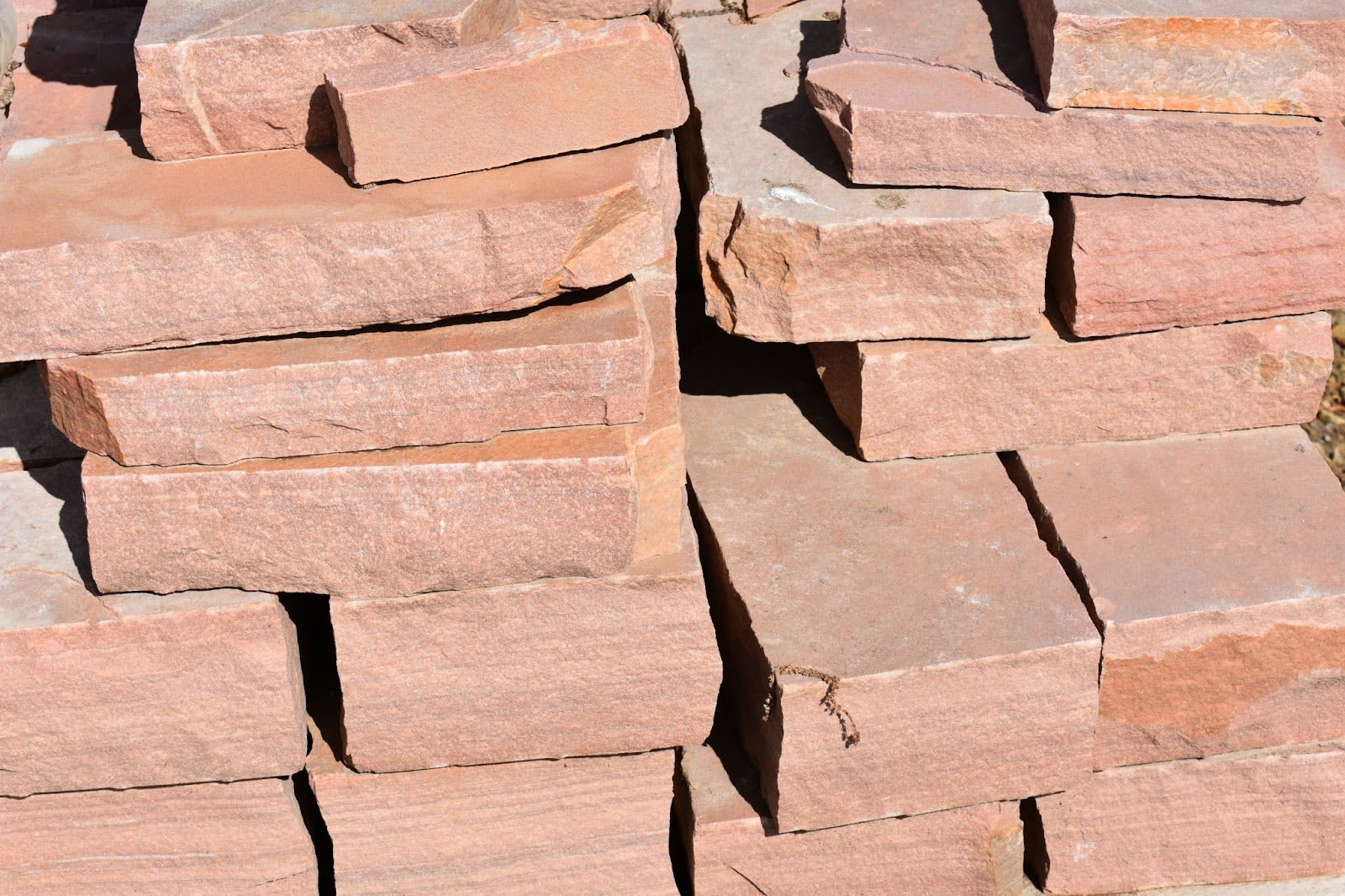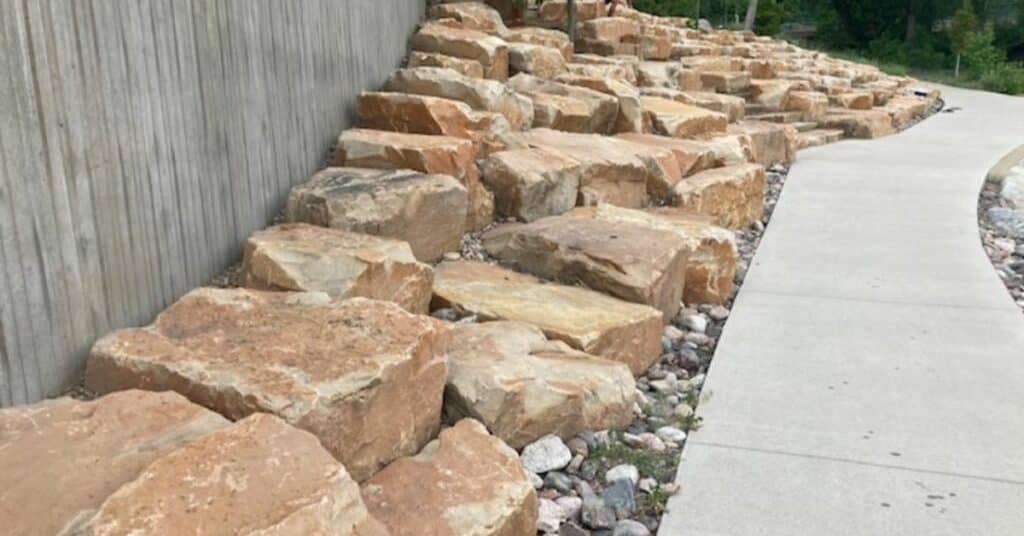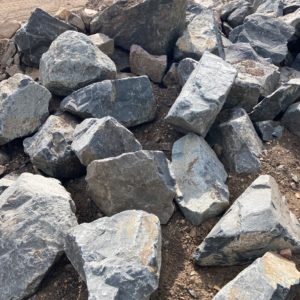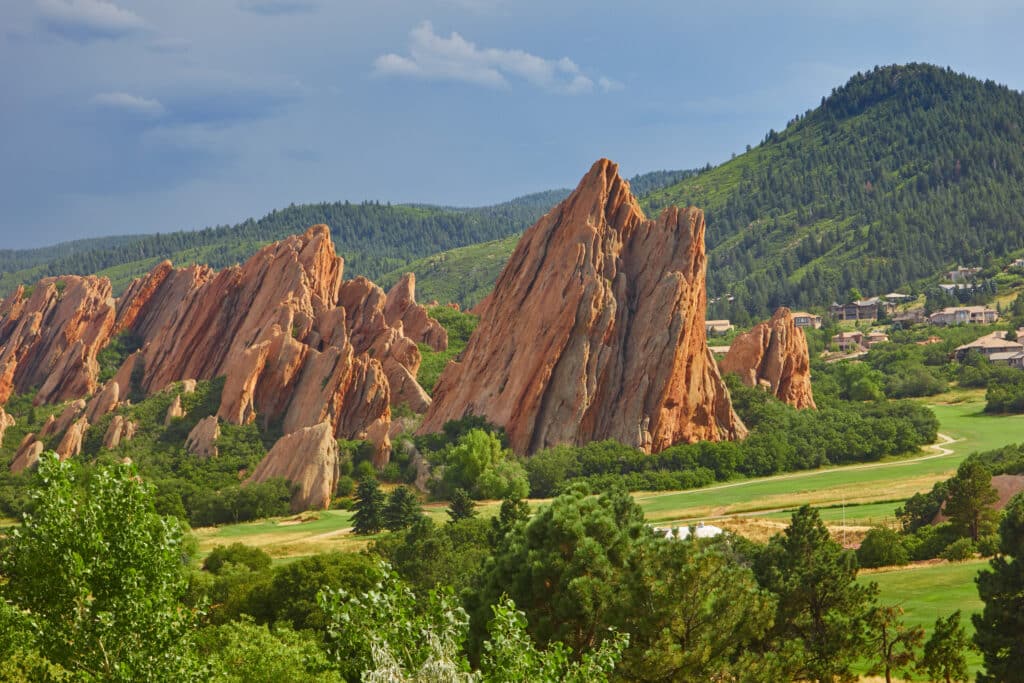
Have you ever wondered what gives different types of landscaping stone its unique color, and why it all looks so different? You’ve probably guessed it has something to do with the area, or by forces deep within the earth. While those are essentially right, there’s obviously a lot more to it than that—as northern Colorado’s local rock experts, it’s part of our job to understand how and where different types of natural stone formed, so we can get the best-looking ones for your yard.
In addition to being region-specific, the color in natural stone is produced by several processes, including rock composition, sedimentation, mineralization, and oxidation. There truly is no limit to the unique beauty that these natural processes can create—it’s part of why we love what we do! Let’s dig into why our natural stone looks the way it does.

Most rocks used in landscaping fall into three main categories, according to how they were formed within the Earth: sedimentary, igneous, and metamorphic. Sedimentary rocks are formed by the millennia-long compression of multiple layers of sediment—things like silt, sand, calcium, and other materials at the bottom of lakes, rivers, and oceans. Colorado sandstone is a common example of sedimentary rock, as is limestone, which forms from compressed seashells and other organic deposits.

Igneous rocks are formed under high heat and pressure deep beneath the earth and are raised toward the surface during volcanic activity and mountain building. Granite is perhaps the best example of igneous rock used in landscaping and construction, and is popular because of its incredible color variety and crystalline appearance. The crystals in granite are partially created from its origin in silica-rich magma beneath the earth, and partially due to other minerals that form chemical bonds as the rock is heated and cooled—a process called mineralization.
Other types of igneous rock commonly used in landscaping are volcanic varieties such as the light and airy pumice (common in gravel-type applications) and obsidian (sharp, black, and flaky, often used as decorative rock).
The tectonic activity that raised the Rocky Mountains millions of years ago formed and pushed up huge slabs of granite, infusing them with superheated veins of gold, silver, and other minerals that cooled within. This explains both the incredible color variation of igneous stones like granite as well as why the Rocky Mountains hold such vast deposits of precious metals.
Metamorphic rocks are formed when one type of rock is transformed into another beneath the earth due to the right combination of heat and pressure. For example, limestone, a sedimentary rock, transforms into marble, a metamorphic rock, with the right combination of heat and pressure. In addition to marble, some of the most common examples of metamorphic rock are slate, gneiss, and quartzite, all of which have various applications in construction and landscaping.
Marble retains limestone’s predominant white color gradient, but heat and pressure will add streaks of clays, silts, and even minerals like iron pyrite (fool’s gold), resulting in swirls of black, gray, and even metallic gold. Iron oxides may also be mixed in, giving the marble a pinkish hue.
The layers of sediment that make up sandstone and other sedimentary rocks are a major influence in the coloration of those stones. Much of the Front Range and Western Colorado, for example, was once a shallow tropical sea, so it accumulated various layers of sediment over the millions of years it existed: a layer of yellowish solidified sand, beneath a layer of gray-white calcified seashell remains, etc.
Because different parts of the seabed experienced different patterns of sedimentation, the sandstone that was formed and later pushed up during the building of the Rocky Mountains exhibits remarkable variation in layers of colors.

The most obvious examples of this ancient seabed sandstone are the red-hued formations found in major formations across Colorado, from Garden of the Gods near Colorado Springs to Red Rocks Amphitheatre near Denver, the Flatirons near Boulder, and the spires and pinnacles of Colorado National Monument near Grand Junction.
Each of these famous formations are made up of sandstone infused with tiny bits of iron, which over time are exposed to oxygen and rust, giving the rocks their reddish color. This process is called “oxidation” and can mostly explain the coloration of all red or orange rocks.
In fact, it was this specific color that inspired early Spanish explorers to dub the region “Colorado,” which essentially translates into a flush, reddish color, like that of someone’s cheeks when they get embarrassed.
As this post shows, Colorado is home to incredible natural processes that have given those of us lucky enough to live here today a wide assortment of beautiful, naturally colored stones. No matter what project you're working on, The Rock Garden will have the right stone for you. Meticulously sculpted and colored by nature over millions of years, quarried and cut by our master stoneworkers, and ready for your enjoyment—there’s nothing like natural Colorado stone. Stop by or give us a call today to learn more about our inventory!